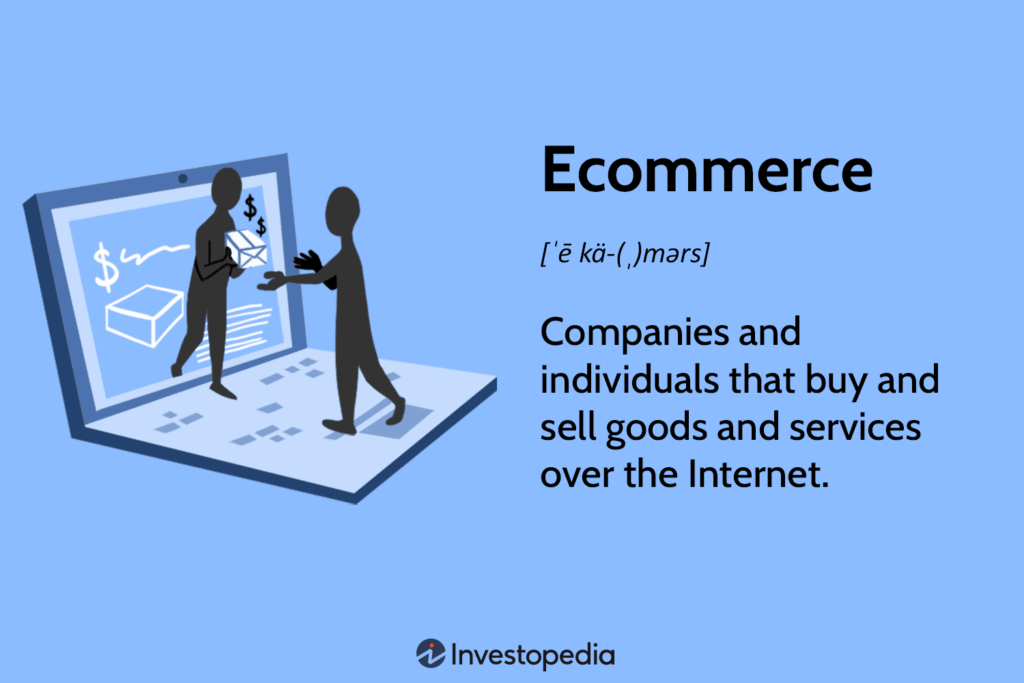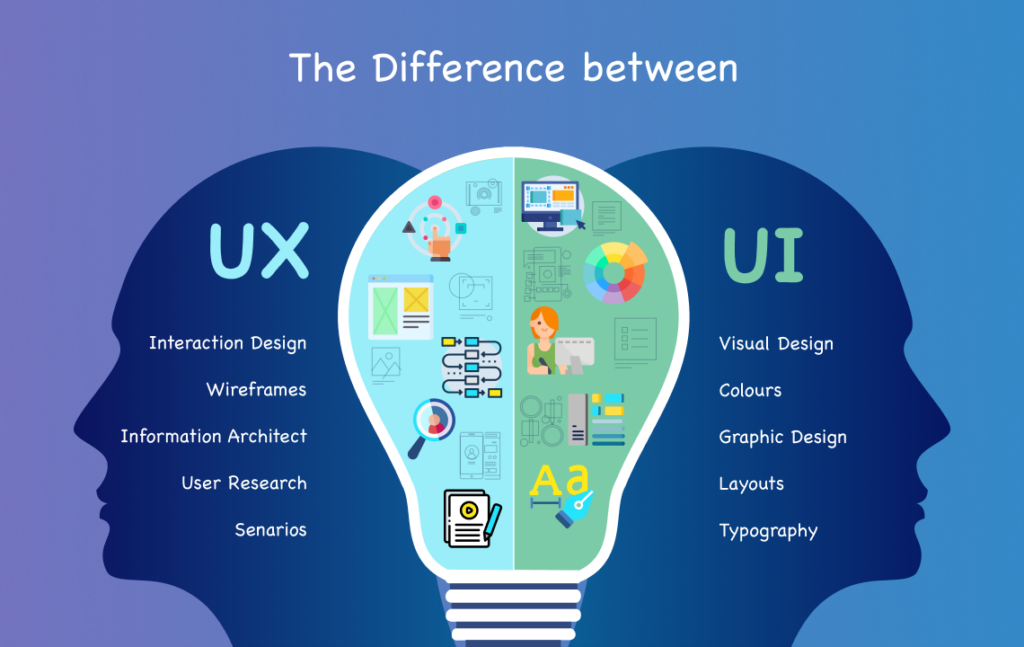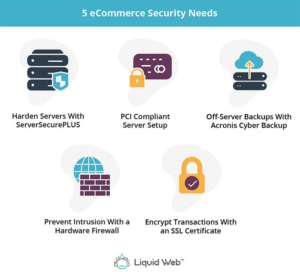In the ever-evolving landscape of e-commerce, staying ahead of the competition requires not only a strong business strategy but also an impeccable website that can engage visitors and convert them into customers. Your website is the digital face of your business, and it plays a pivotal role in shaping the perception of your brand. In today’s hyper-competitive digital age, capturing and retaining the attention of online users is a challenge, but it’s also an opportunity. Effective e-commerce website development is the foundation of online success, facilitating trust, conversion, and adaptability to changing trends. It’s about creating a seamless, user-friendly experience that fosters trust and encourages visitors to become loyal customers. In this blog, we will delve into the best practices and trends in e-commerce website development, exploring how they can help businesses thrive in the digital marketplace, and ultimately, elevate their online presence to new heights.

Best Practices and Trends in Today’s E-Commerce Websites
Responsive Design for Multi-Device Accessibility
One of the fundamental best practices in e-commerce website development is adopting a responsive design approach. With the proliferation of smartphones and tablets, consumers access online stores from a variety of devices. A responsive design ensures that your e-commerce site looks and functions flawlessly across all screen sizes, offering a seamless shopping experience.

Streamlined Navigation and User Experience
The user experience (UX) is a critical factor in e-commerce success. Your website’s navigation should be intuitive and user-friendly. Shoppers should be able to find products easily, view detailed information, and proceed to checkout without any hassles. Streamlining the purchasing process can significantly reduce cart abandonment rates.

High-Quality Product Imagery and Descriptions
In e-commerce, what customers see and read about your products matters immensely. Invest in high-quality product photography and provide detailed, informative descriptions. Utilize multiple images, including zoom-in options, to showcase products from various angles. Accurate and persuasive descriptions can enhance trust and encourage conversions.
Fast Loading Speeds and Performance Optimization
Slow-loading websites can deter potential customers. To combat this, focus on optimizing your e-commerce site’s performance. Minimize image sizes, leverage browser caching, and invest in reliable hosting services to ensure fast loading speeds. A fast website not only improves user satisfaction but can also positively impact search engine rankings.
Security and Trust-Building Measures
Security is paramount in e-commerce, as customers share sensitive information during the checkout process. Implement robust SSL certificates to secure data transmission and assure customers of their safety. Display trust seals and certifications to instill confidence, and be transparent about your privacy and return policies.

Personalization and AI Integration
Personalization is a growing trend in e-commerce. Implementing artificial intelligence (AI) can help analyze customer data and tailor recommendations and content based on individual preferences. This level of personalization can significantly boost sales and customer loyalty.
Mobile Commerce (M-commerce) Optimization
The rise of mobile commerce cannot be ignored. Ensure that your e-commerce website is optimized for M-commerce. Simplify the mobile checkout process, incorporate mobile payment options, and consider developing a dedicated mobile app for your online store.
Integration with Social Media and User-Generated Content
Social media plays a vital role in modern e-commerce. Integrating your website with social platforms allows customers to share their purchases and reviews easily. Encourage user-generated content, such as customer reviews and testimonials, to build trust and authenticity.
AI-Powered Chatbots for Customer Support
Chatbots powered by AI are becoming increasingly popular for providing quick customer support. They can answer common queries, assist with product selection, and even process orders. Implementing chatbots can improve customer service and free up human agents for more complex issues.
Voice Search Optimization
Voice search is on the rise, thanks to devices like smartphones and voice-activated speakers. Optimize your e-commerce website for voice search by using natural language keywords and creating conversational content that mirrors the way people speak.
Blockchain Technology for Transparency
Blockchain technology can enhance transparency in e-commerce by providing an immutable ledger of product and transaction history. This can be especially beneficial in industries where authenticity and origin verification are crucial, such as luxury goods or organic products.
Sustainability and Eco-Friendly Practices
Sustainability is not just a trend but a necessity. Many consumers prioritize eco-friendly products and practices. Highlight your commitment to sustainability in your e-commerce website, from product descriptions to eco-friendly packaging options.
Building Customer Trust: Reviews, Ratings, and Social Proof
In the world of e-commerce, trust is a precious commodity. To establish trust with your audience, encourage customer reviews and ratings on your products. Positive reviews and high ratings serve as social proof, assuring potential customers of the quality and reliability of your offerings. Display these reviews prominently on your website to build credibility.

Content Marketing and SEO
Effective content marketing can drive organic traffic to your e-commerce site. Create valuable and informative blog posts, articles, and guides related to your products or industry. Use SEO techniques to optimize your content for search engines, helping potential customers find your website when they search for relevant topics or products.
Email Marketing and Retention
Email marketing remains a powerful tool for e-commerce businesses. Build and segment your email list to send personalized messages, product recommendations, and special offers to different customer segments. Retaining existing customers can be more cost-effective than acquiring new ones, so enhance your customer relationships through email marketing.
Omnichannel Shopping Experience
Customers today expect a seamless shopping experience across multiple channels. Ensure that your e-commerce website integrates seamlessly with your physical stores (if you have them), mobile apps, and even marketplaces like Amazon and eBay. Consistency across these channels enhances customer satisfaction and loyalty.
Voice Commerce and Conversational Commerce
With the rise of virtual assistants like Siri, Google Assistant, and Alexa, voice commerce is gaining traction. Optimize your e-commerce site for voice search, and consider integrating voice-enabled shopping features. Conversational commerce, where customers can chat with AI-powered assistants for product recommendations and purchases, is also becoming popular.
Augmented Reality (AR) and Virtual Reality (VR)
AR and VR technologies are transforming the way consumers shop online. AR allows customers to visualize products in their own space through their smartphone cameras, while VR can create immersive virtual shopping environments. These technologies enhance the online shopping experience and reduce uncertainty about product suitability.

Subscription Models and Personalized Shopping
Subscription-based e-commerce models are booming. Offering subscription options for your products can create a steady stream of revenue and customer loyalty. Personalize subscription recommendations based on customer preferences to maximize subscription retention rates.
Green Shipping and Sustainable Practices
Consumers are increasingly concerned about the environmental impact of e-commerce. Consider eco-friendly shipping options, such as carbon-neutral shipping or using sustainable packaging materials. Clearly communicate your commitment to sustainable practices on your website to appeal to environmentally conscious consumers.
AI-Driven Predictive Analytics
Utilize the power of AI-driven predictive analytics to anticipate customer behavior and optimize your inventory and pricing strategies. This technology can help you reduce costs, improve inventory management, and maximize revenue.
Localization and International Expansion
Expanding your e-commerce business internationally can open up new markets and revenue streams. To succeed, ensure that your website supports multiple languages and currencies and complies with international regulations and tax laws.
Key Takeaways
- Responsive Design: Ensure your website is accessible and user-friendly across all devices.
- Streamlined UX: Simplify navigation and checkout processes to reduce friction for customers.
- High-Quality Content: Use compelling product imagery and informative descriptions to engage and inform customers.
- Performance Optimization: Fast-loading websites improve user experience and SEO rankings.
- Security and Trust: Invest in security measures and build trust through transparent policies.
- Personalization: Leverage AI for personalized recommendations and content.
- M-commerce: Optimize for mobile shopping and consider mobile apps.
- Social Integration: Encourage user-generated content and social sharing.
- AI-Powered Chatbots: Use chatbots for efficient customer support.
- Voice Search: Optimize for voice search to cater to changing search behavior.
- Blockchain: Consider blockchain for enhanced transparency, particularly in certain industries.
- Sustainability: Highlight eco-friendly practices and products.
The Future of E-commerce Website Development
The e-commerce landscape will continue to evolve rapidly, and staying competitive will require constant adaptation. Here are some trends to watch for in the future:
- Augmented Reality Shopping: Expect AR to become more prevalent, allowing customers to interact with products virtually before making a purchase.
- Voice Commerce Evolution: As voice assistants become smarter, voice commerce will become more sophisticated, potentially including complex product searches and purchases.
- AI-Powered Personalization: AI will play an even larger role in tailoring user experiences, from dynamic pricing to hyper-personalized product recommendations.
- Sustainability as a Standard: Eco-friendly practices will no longer be a selling point but an expectation. Green shipping and sustainable packaging will become industry norms.
- Cross-Platform Integration: Seamless experiences across various devices and channels will be essential to meet customer expectations.
- Niche Marketplaces: As e-commerce continues to grow, niche marketplaces will emerge, catering to specialized industries and audiences.
- E-commerce 4.0: The integration of technologies like the Internet of Things (IoT) and 5G will enable new forms of e-commerce, such as smart appliances that automatically reorder products.
- Data Privacy and Security: With increasing data breaches, customers will demand better data protection, and compliance with privacy regulations will be crucial.
- AI-Driven Supply Chain Management: AI will optimize not only customer-facing aspects but also supply chain operations, enhancing efficiency.
- Blockchain Adoption: Blockchain technology may gain broader adoption for supply chain transparency and secure transactions.
Centric Tech – Your Partner in E-Commerce Excellence
Centric Tech is your go-to expert when it comes to e-commerce services. They’ve got a team of experts who know all the ins and outs of making online stores work like a charm. They create websites that are not only easy on the eyes but also super easy to use, especially on smartphones. By utilizing the power of data insights and digital marketing, they make data-driven decisions to make sure your online business runs smoothly and reaches the target audience. Centric Tech has a knack for turning visitors into loyal customers, and they’ve got a track record that proves it. To see how they can take your e-commerce to your goals, just visit their website and see firsthand why they are the leading name in e-commerce website development.
Conclusion: Navigating the E-commerce Evolution
In the ever-evolving landscape of e-commerce, one thing remains certain: change is the only constant. Businesses must adapt and evolve their e-commerce websites to meet the ever-changing demands and expectations of online shoppers.
We’ve explored a multitude of best practices and trends in e-commerce website development, each playing a crucial role in the success of online businesses. These practices, from responsive design and streamlined navigation to AI-powered personalization and sustainability, form the foundation upon which modern e-commerce sites are built.
Looking ahead, the future of e-commerce website development promises even more exciting innovations. Augmented reality, voice commerce, and advanced AI-driven personalization are poised to revolutionize how customers interact with online stores. Sustainability and data privacy will become standard expectations, and cross-platform integration will be essential to meet customers wherever they are.
In conclusion, e-commerce website development is a dynamic and multifaceted field that demands constant attention and adaptation. By staying informed about the latest trends and implementing best practices, businesses can not only survive but thrive in the competitive world of e-commerce.


